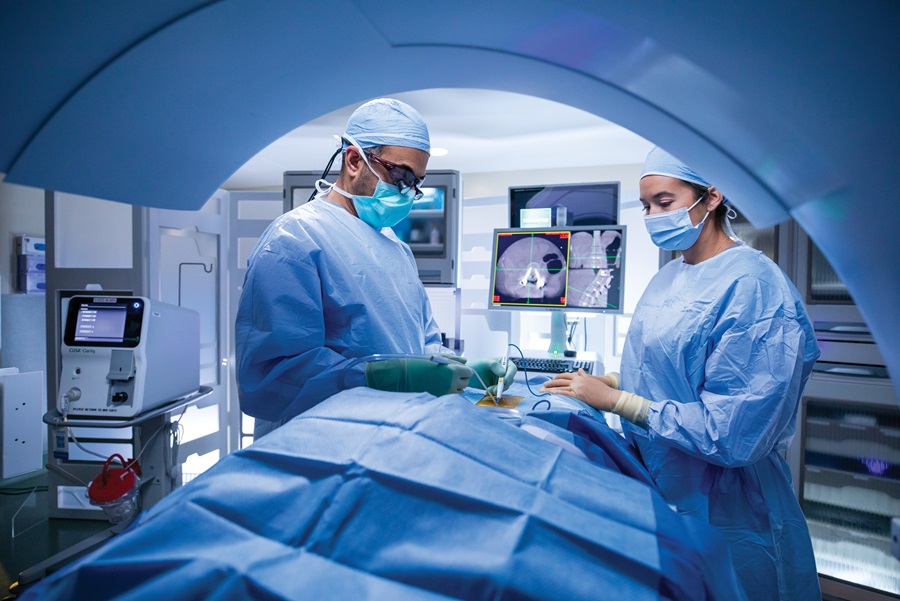Just How Insurance policy Functions with the Best Spine Surgeons in St Louis MO
Just How Insurance policy Functions with the Best Spine Surgeons in St Louis MO
Blog Article
A Review of Back Problems That Often Cause Surgical Therapies
Back conditions such as herniated discs, spinal stenosis, and degenerative disc illness regularly demand surgical interventions when conservative treatments stop working to relieve persistent symptoms. These conditions not only bring about substantial pain yet can also seriously harm daily functioning and general top quality of life. Comprehending the nuances of each problem and the equivalent medical options, such as discectomy or back blend, is vital for effective management. As we explore these problems better, it comes to be obvious that the decision-making process surrounding medical therapy is diverse and warrants mindful consideration.
Herniated Discs
Although several people with herniated discs may discover relief with conventional therapies, surgery ends up being an essential factor to consider when signs continue or worsen - best spine surgeons in st louis mo. A herniated disc takes place when the soft inner gel of a back disc protrudes via its outer layer, possibly leading and pressing neighboring nerves to pain, numbness, or weakness in the extremities
Traditional management commonly includes physical treatment, discomfort medications, and corticosteroid shots, which intend to minimize swelling and improve feature. In cases where these techniques fall short to alleviate debilitating signs, medical alternatives might be explored.
The most typical procedure for herniated discs is a discectomy, which entails the elimination of the herniated portion of the disc to eliminate stress on the influenced nerve origin. In more severe cases, spine combination might be needed to maintain the affected vertebrae.
Patients are recommended to go over the possible threats and benefits of surgical treatment with their health care copyright to make an informed decision. Ultimately, the goal of any surgical treatment is to recover feature, alleviate pain, and boost total top quality of life for people experiencing herniated discs.
Back Constriction
Spine stenosis occurs when the spaces within the back slim, bring about boosted stress on the spine cord and nerves. This problem can create in different regions of the spine, consisting of the cervical and back areas, frequently due to age-related adjustments, such as degenerative disc condition, arthritis, or enlarging of tendons.
Clients with spinal constriction may present with signs and symptoms that consist of pain, pins and needles, prickling, or weak point, mainly in the arms or legs. These signs can be aggravated by activities that involve standing or strolling, typically leading individuals to look for relief with conventional therapies like physical treatment, medications, or epidural steroid shots.
However, when these non-surgical interventions fall short to provide appropriate alleviation, surgical choices might be considered. Typical medical treatments for spinal stenosis consist of laminectomy, which entails the removal of part of the vertebra to relieve pressure, and spine blend, which stabilizes the afflicted location.
Spondylolisthesis
Spondylolisthesis takes place when one vertebra slips ahead over an additional, leading to imbalance of the back. This condition can result from various aspects, consisting of genetic defects, trauma, or degenerative changes in the spinal column. It is most frequently observed in the back area, especially at the L4-L5 and L5-S1 degrees.

Therapy alternatives differ based upon the intensity of the slippage and the signs presented. Traditional procedures, including physical therapy, discomfort administration, and activity my review here alteration, are commonly the very first line of defense. Nonetheless, when non-surgical techniques fail to relieve signs and symptoms or when considerable nerve compression is present, medical intervention might be required. Surgical options can consist of spinal blend or decompression procedures, intended at restoring placement and minimizing neurological symptoms. Early diagnosis and proper management are important for optimum end results in individuals with spondylolisthesis.
Degenerative Disc Illness

The condition can be identified through a combination of professional analysis, imaging researches, and individual history. When these approaches fail to provide ample alleviation, surgical interventions may be considered.
Surgical options for DDD might include back combination or artificial disc substitute, focused on maintaining the impacted segment and alleviating discomfort (best spine surgeons in st louis mo). Eventually, the selection of therapy is individualized, thinking about the seriousness of the problem, individual health, and way of living aspects
Back Growths

What aspects add to the development of growths within the back, and how do they manifest in individuals? Back tumors can occur from numerous variables, including genetic tendency, ecological impacts, and pre-existing clinical problems. They can be categorized as primary tumors, coming from the back, or second tumors, which spread from other regions of the body. Clients may offer with a series of symptoms, consisting of localized pain, neurological deficiencies, weakness, or modifications in bowel and bladder function, depending upon the growth's size and location.
Diagnosis normally includes imaging research studies such as MRI or CT scans, which aid define the growth's characteristics and effect on bordering structures. In assessing therapy choices, the tumor's quality, kind, and location are critical factors to consider. Surgical intervention might be required to reduce signs and symptoms, get a biopsy, or remove the lump completely. The objective of surgical treatment is frequently to unwind neural aspects and stabilize the spinal column. Adjuvant therapies, consisting of radiation or chemotherapy, might also be needed wikipedia reference depending upon the lump's nature. Early discovery and intervention are essential for optimizing outcomes in patients with back lumps.
Final Thought
In recap, spine conditions such as herniated discs, spine constriction, spondylolisthesis, degenerative disc disease, and spinal growths regularly demand surgical intervention because of their possible to create significant pain and practical disability. While traditional therapies may provide momentary alleviation, medical alternatives become crucial when signs linger or get worse. Timely diagnosis and intervention play an important duty in recovering feature and boosting the lifestyle for damaged people, emphasizing the importance of comprehensive spinal care.

Report this page